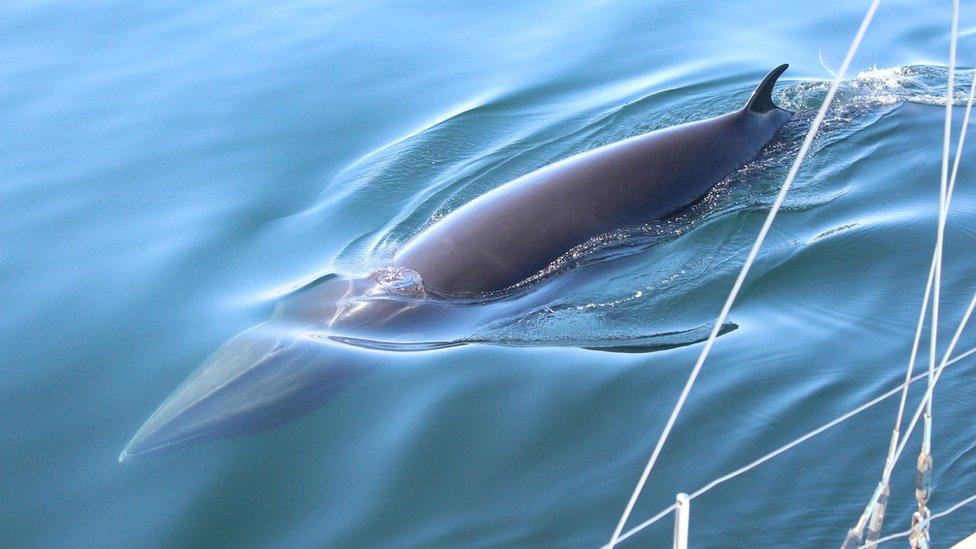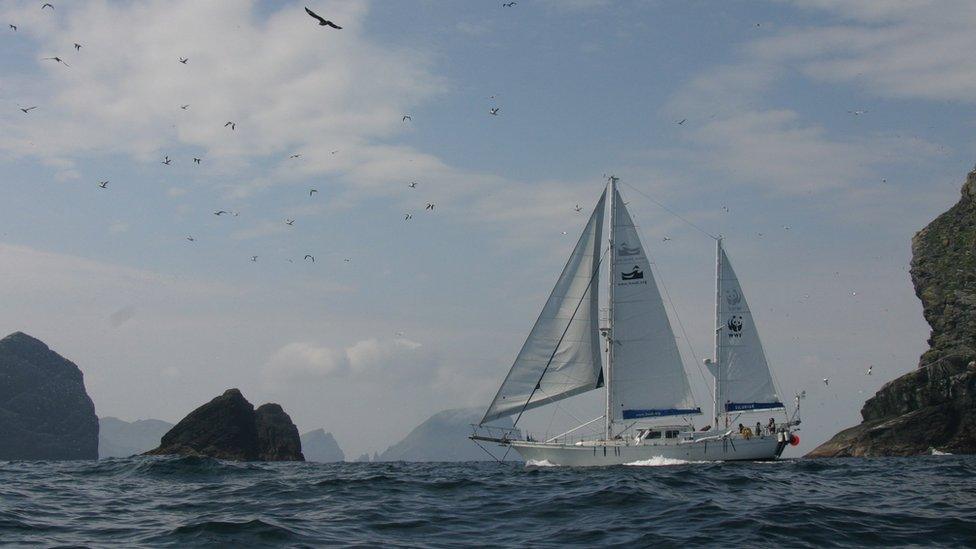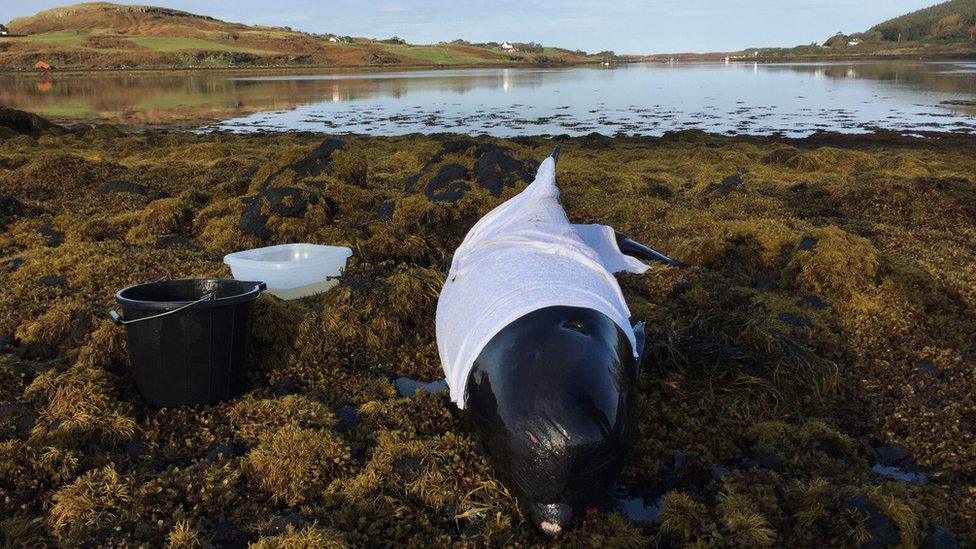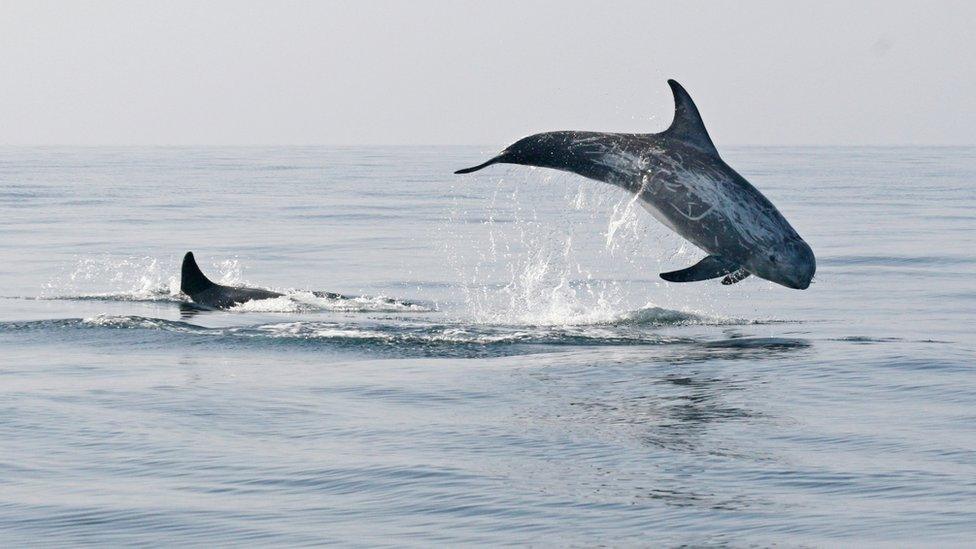Scientists suggest minke whale 'baby boom' off Scotland
- Published

A juvenile minke whale
Conservationists have suggested a "baby boom" as a possible reason behind increased sightings of juvenile minke whales off western Scotland this year.
The Hebridean Whale and Dolphin Trust (HWDT) recorded its highest ever number of young whales in its latest survey of marine life. The surveys began in 2003.
Twenty-eight juveniles were counted this year, three times the average compared with previous years.
Whales coming in from other areas has also been suggested as a reason.
Survey team members documented 28 juvenile minke whales and 30 adults. HWDT said it was an "unusually high proportion" of young compared to adults.
The survey had an encounter rate of one juvenile minke per 177 miles (286 km).

The survey is done from the trust's yacht Silurian
It also recorded the highest annual number of common dolphin sightings since the charity's expeditions began, with 723 individuals observed over 63 encounters.
The species was once uncommon in the Hebrides, but the trust's encounter rate with the species has more than doubled over the past 12 years.
Kerry Froud, HWDT biodiversity officer, said: "These intriguing changes in Scotland's marine life highlight the importance of long-term monitoring of cetaceans - so that we can better understand what is happening in our waters, and then make management recommendations to better protect this world-class area of marine biodiversity."
The surveys are carried out between May to October by scientists and volunteers on board Silurian, the trust's dedicated research yacht.
- Published30 October 2015

- Published21 October 2015

- Published12 November 2013
